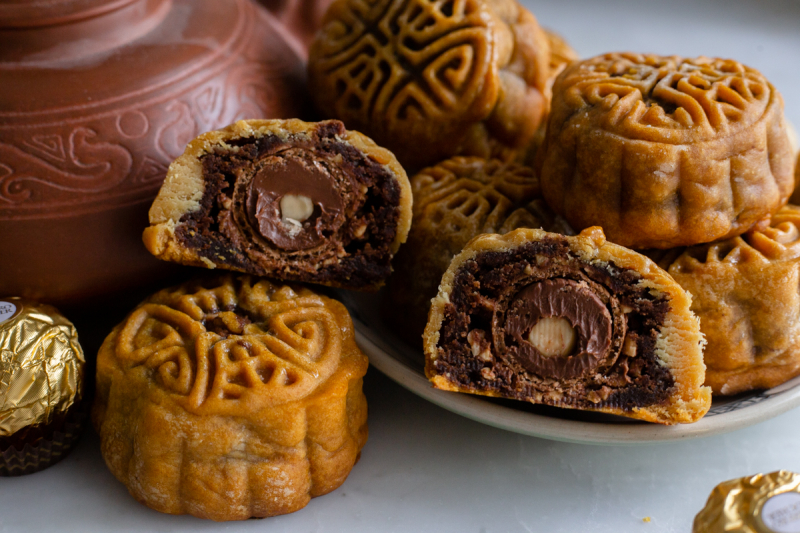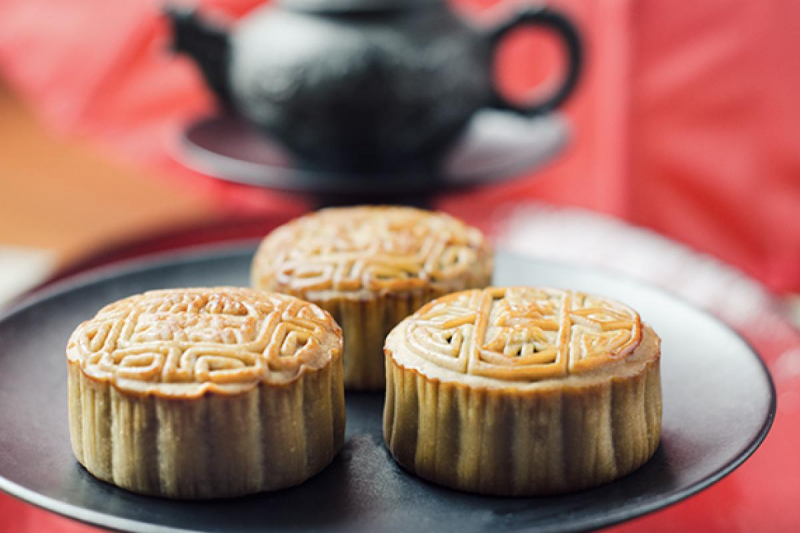Moon Cake
A customary Chinese dish for the Mid-Autumn Festival is moon cake. Its spherical shape represents a family reunion. A sacrifice is also made to the Moon God during the Mid-Autumn Festival. The Taishi cake, which first emerged in the early Zhou Dynasty (1046 BC - 256 BC) and the late Shang Dynasty (17th century BC), may have been the ancestor of the Moon Cake. Moon Cake was a regal delicacy throughout the Tang and Song dynasties before being made available to the general public. MoonCake consumption on Mid-Autumn Festival had gained popularity up until the Ming Dynasty. A variety of Moon Cake styles emerged during the Qing Dynasty as talents increased.
The most popular fillings for traditional Moon Cakes include five nuts, red bean paste, roses, lotus seed paste, osmanthus, dried plum, rock sugar, ginkgo, pork floss, black sesame, ham, egg yolk, etc. There are many other varieties of Moon Cakes. The skin and the filling are the two pieces that make up a mooncake. Alkaline water, cooking oil, golden syrup, and wheat are used to make the skin. In addition to sesame and almonds, lotus seeds are used to make the traditional lotus paste filling. Before baking, the skin is wrapped around the filling and squeezed into a lovely mold.
Daoxiangcun, Lian Xiang Lou, Guan Sheng Yuan, and more mooncake brands have emerged since the 1900s. Some mooncake brands have been around for more than a century at this point. Mooncakes are now consumed by Chinese people during the Mid-Autumn Festival, and they are also given as gifts. There are now incredibly expensive mooncakes, and mooncakes have been getting more and more ornate in recent years. Some Moon Cakes come in opulent gift packaging, and a box of Moon Cakes can cost up to tens of thousands of RMB.









